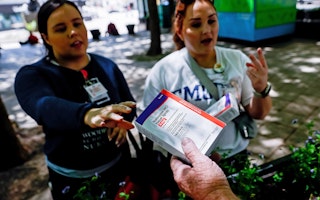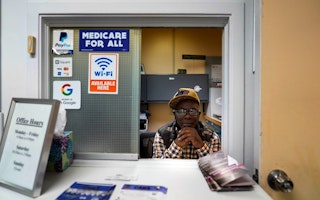Maryland Can't Afford to Keep Locking Up Addicts
By Diana Morris
The following opinion piece appeared in the January 20, 2004 edition of the Baltimore Sun. Diana Morris is director of OSI-Baltimore.
Maryland's corrections chief, Mary Ann Saar, recently launched an initiative to shift her department's focus toward rehabilitating drug-addicted inmates rather than merely incarcerating them.
A recent poll shows that Marylanders overwhelmingly support their state going even further than this change in policy by reducing the number of incarcerated drug offenders in favor of rigorous treatment programs.
According to the poll, which was conducted by Potomac Inc. for the Campaign for Treatment Not Incarceration, the vast majority of Maryland voters—73 percent to 11 percent—see treatment as more effective at stopping drug use than prison, and believe that the state is not doing enough to provide treatment to people in need. In addition, they strongly support criminal justice reform, especially reducing lengthy sentences, abolishing mandatory minimums and diverting nonviolent offenders from prison into treatment.
Marylanders know that we waste a lot of money because we incarcerate drug offenders without addressing the reason they land in prison in the first place—their addiction.
According to a study by the Urban Institute, 40 percent of individuals entering Maryland prisons in 2001 were locked up for drug crimes, primarily possession. And because most drug-addicted people do not receive treatment in prison, they often return to drug use after release. As a result, they are reincarcerated for technical parole violations when they test positive for illegal drugs. The number of technical parole violators returning to state prisons increased sevenfold from 1980 to 1998, reflecting an increase from 7 percent to almost one-third of all prison admissions.
A study by the Justice Policy Institute, commissioned by the Legislative Black Caucus, makes it clear that blacks are shouldering the brunt of these policies. According to the report, although blacks make up only 28 percent of Maryland's general population, they accounted for 68 percent of the people arrested and 90 percent of those incarcerated for drugs in the state in 2001. Yet we know from national research that the rate of illegal drug use among blacks is roughly the same as that of the general population.
These numbers show that Ms. Saar's initiative, while an important advance, is not enough.
Over the past two decades, the state built five correctional facilities and increased the prison budget by $300 million—more than 40 percent of the budget shortfall policy-makers in Annapolis will struggle to close this year. Maryland needs to join the national trend of states diverting nonviolent drug offenders from prison into community treatment in the first place, thereby reserving prison beds for those who truly need to be incarcerated and state funds for voter priorities such as education.
Half the states in the country have already taken this route. Since 1998, for example, Ohio has made structural changes at both the "back end" and "front end" of its correctional system, reducing its prison population by 4,000 people, closing a prison and saving $40 million.
In July, Republican Texas Gov. Rick Perry signed legislation passed by the state's GOP-controlled legislature diverting low-end drug offenders from prison into treatment. That law is expected to redirect 2,500 inmates from Texas prisons into treatment and save $115 million over the next five years.
Mandating treatment rather than prison would help us both balance the budget and fund community-based organizations to provide treatment and reintegration assistance. Figures from the Maryland Alcohol and Drug Abuse Administration show that of the 285,994 Marylanders in need of drug treatment last year, only 24 percent received it, leaving a "treatment gap" of more than 200,000 people.
We must ensure that there is help—not just prison—for drug-dependent people as they attempt to become productive members of society. If we don't, our poorest communities will continue to be destabilized by large numbers of returning ex-prisoners, still addicted and without skills, good health and connections in the community to help them succeed.
Ms. Saar knows this, and so do Maryland's voters. Now the governor and legislature should go beyond the correctional system's first steps to shift resources and people toward treatment in the community rather than incarceration.
In other words, having proved we can be tough on crime, it's time to show we can be smart on crime as well. We can't afford it any other way.
Copyright © 2004, The Baltimore Sun
Until December 2019, Diana Morris was the director of the Open Society Institute-Baltimore and the Open Places Initiative.


